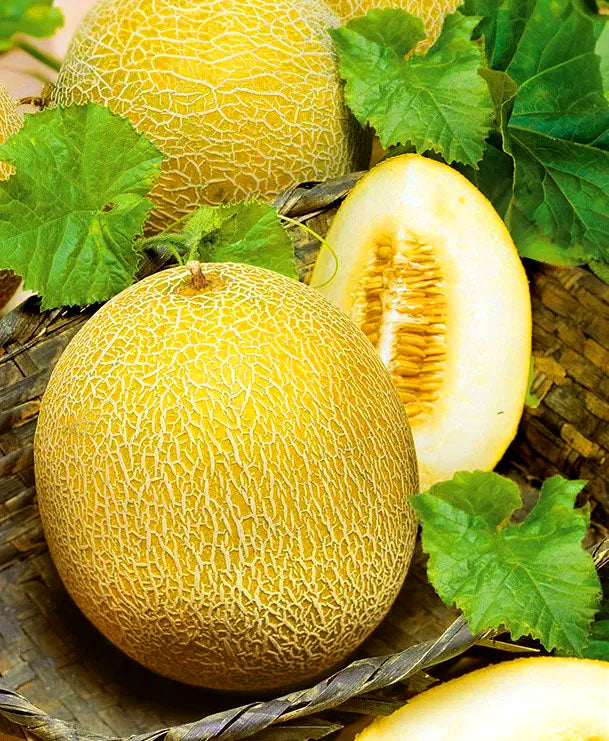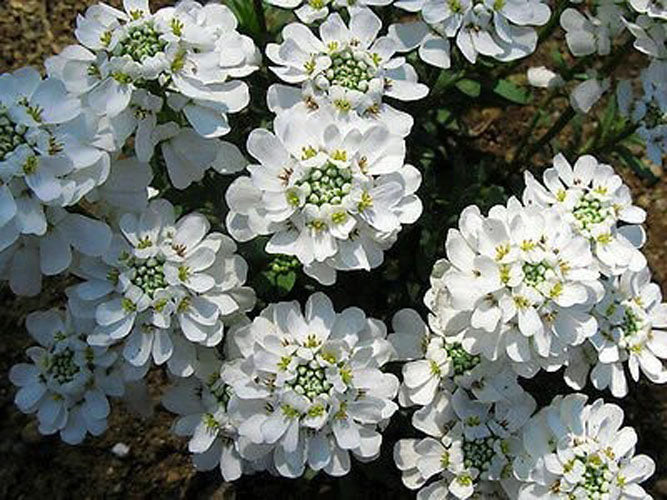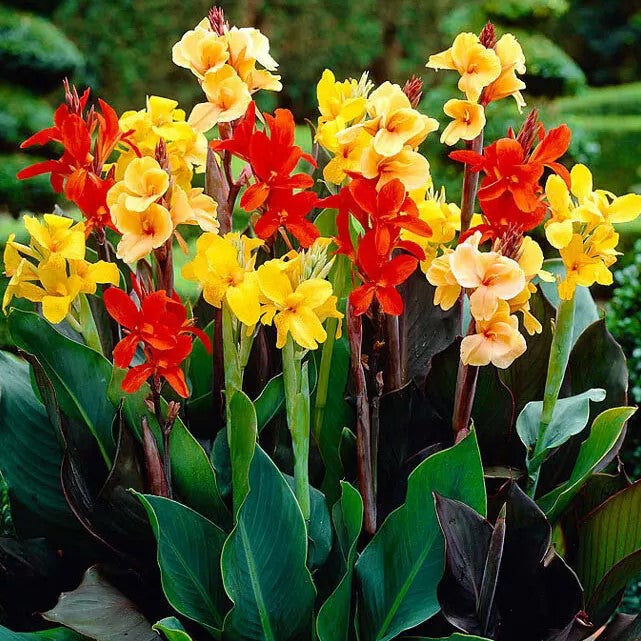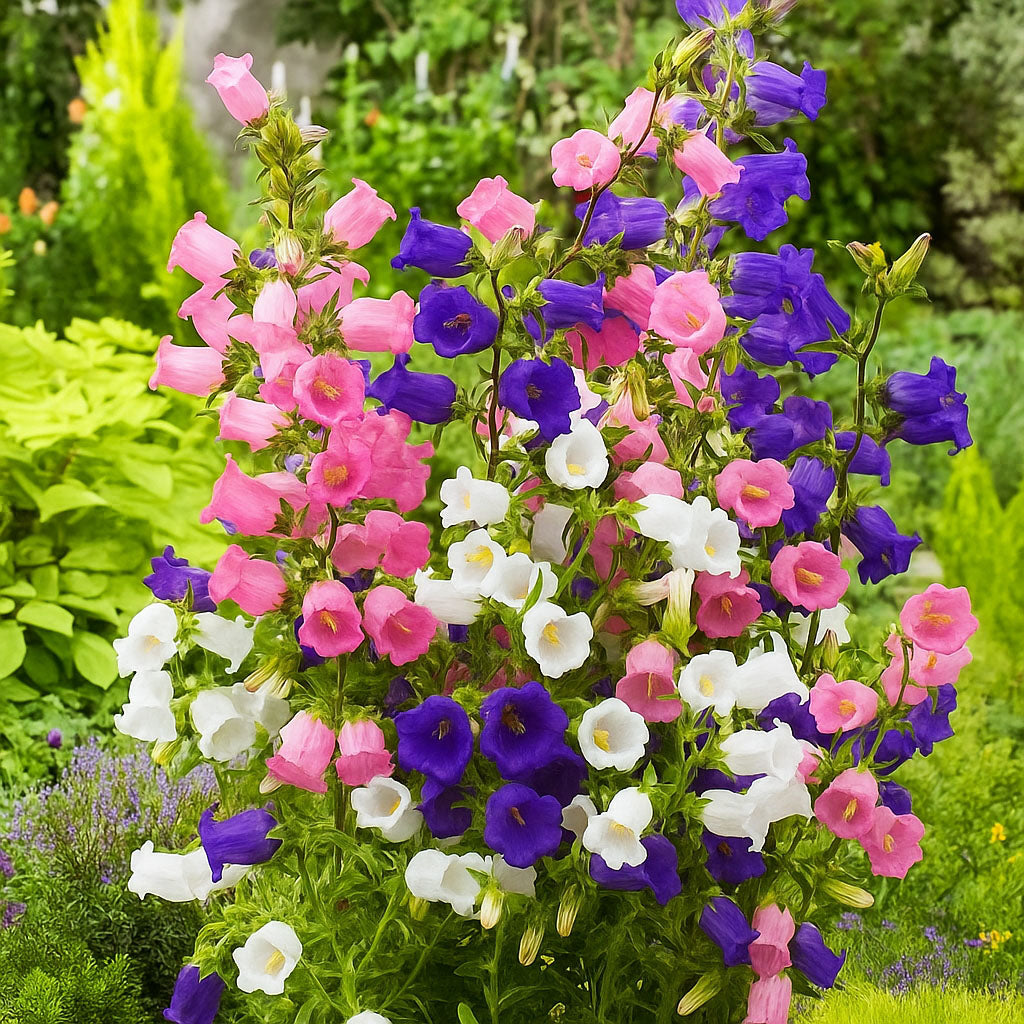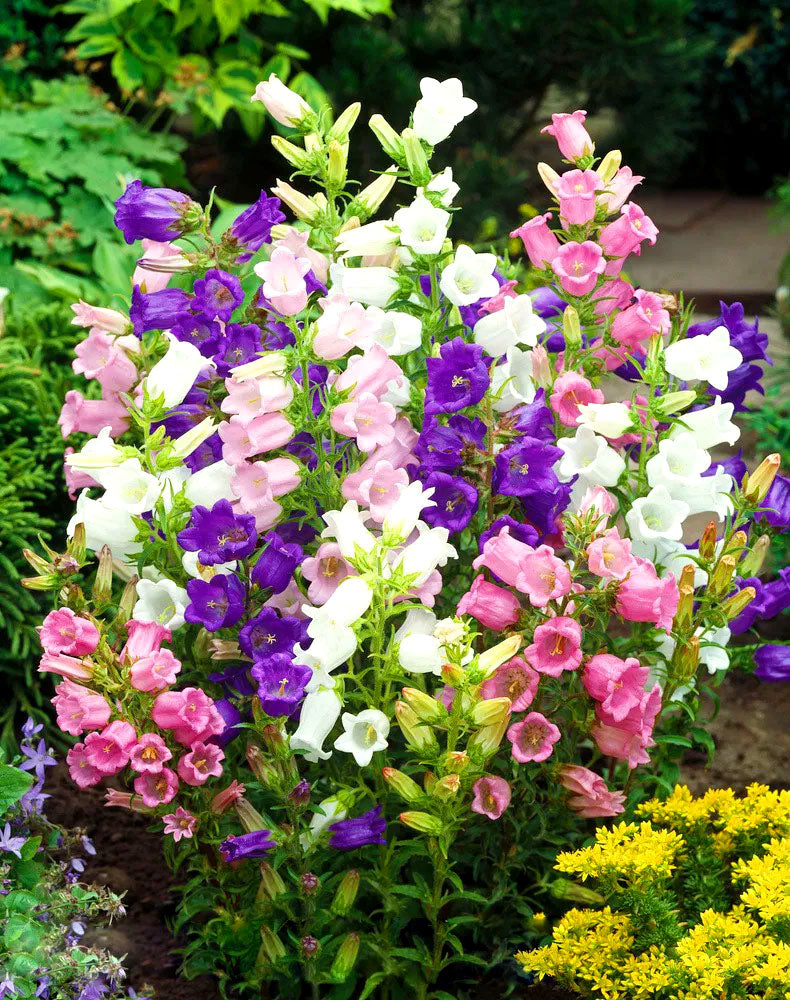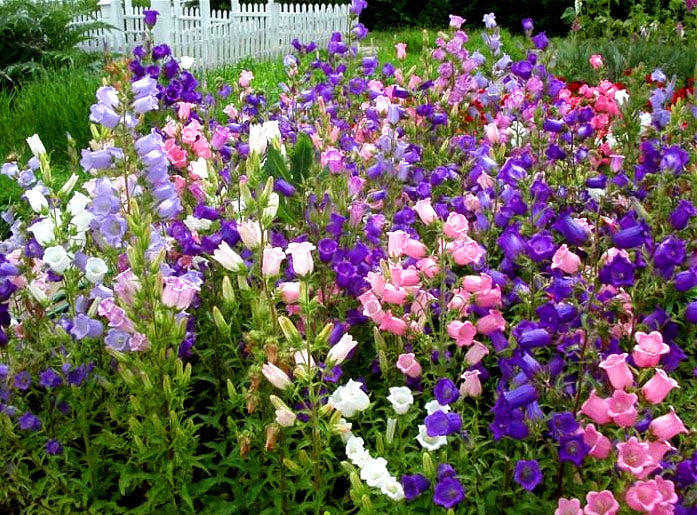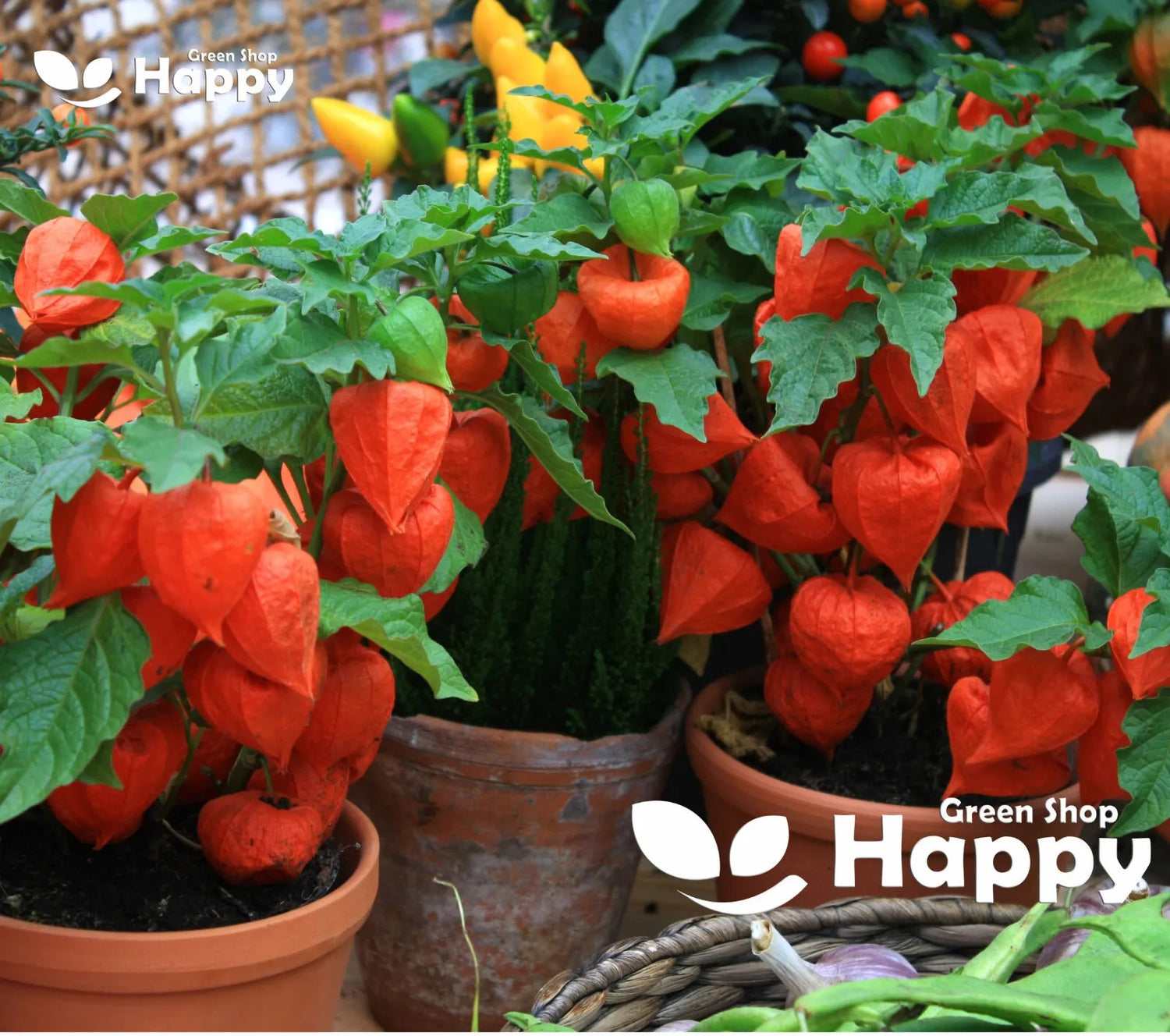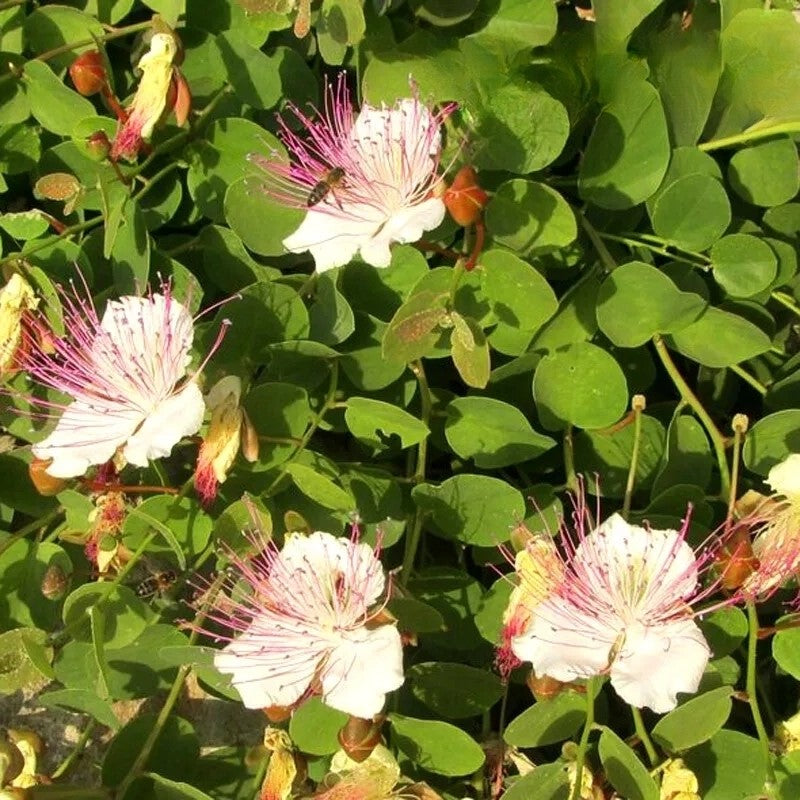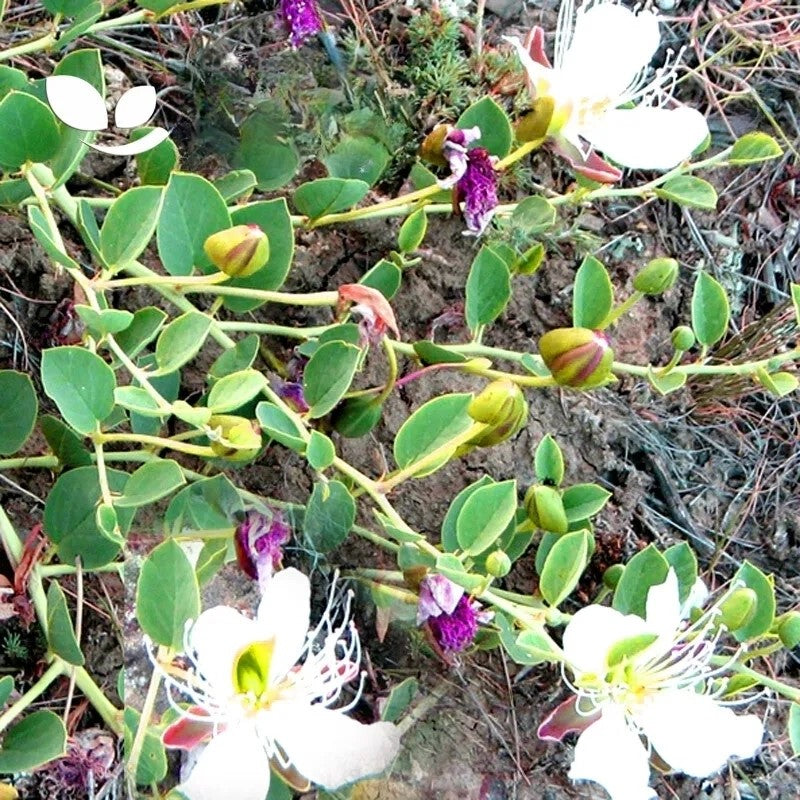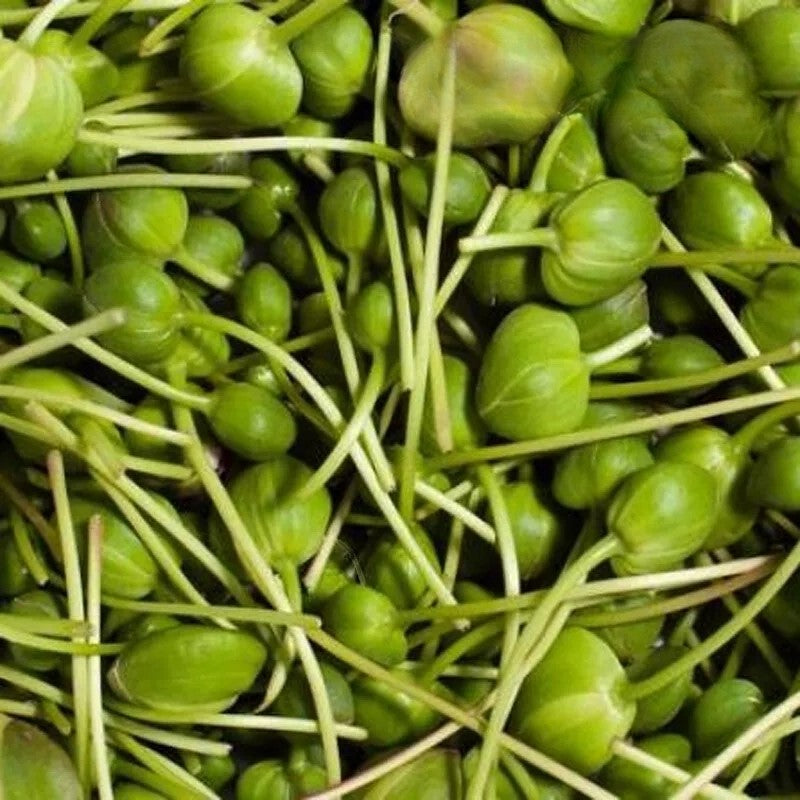Sort by:
1113 products
1113 products
Candytuft 'Snowflake' Seeds (Iberis sempervirens)
Candytuft 'Snowflake' is a low-growing evergreen perennial prized for its dazzling carpets of pure white flowers in spring. Forming dense mounds of glossy green foliage, it provides year-round interest and thrives in borders, rock gardens, and containers. Hardy and easy to grow, it’s an excellent choice for groundcover and edging.
What Makes It Special
-
Masses of snow-white blooms in spring
-
Evergreen foliage for year-round appeal
-
Excellent groundcover and edging plant
Key Features
-
Botanical name: Iberis sempervirens
-
Hardy perennial
-
Height: 20–25 cm (8–10 in)
-
Spread: 30–40 cm
-
Bloom time: Spring
Ideal For
-
Rock gardens and borders
-
Groundcover and edging
-
Containers and sunny slopes
Sowing
-
Sow indoors Feb–Apr or outdoors Apr–Jun
-
Cover seeds lightly with fine soil
-
Germination: 14–21 days at 18–22°C
-
Space plants 25–30 cm apart
-
Flowers from the second year onward
Canna ‘Indian Shot’ Mix – Seeds (Canna indica Mix)
Canna ‘Indian Shot’ Mix (Canna indica) is a striking annual producing lush foliage and vibrant flowers in a mix of red, orange, and yellow shades. These tall, tropical-looking plants add drama and color to borders, beds, and containers, flowering from mid-summer to autumn. Easy to grow in fertile, well-drained soil, Cannas are perfect for creating bold garden displays and attracting pollinators such as hummingbirds and bees.
Why Grow "Indian Shot" Mix
-
Stunning tropical foliage with bright, mixed-color flowers
-
Long flowering period from mid-summer to autumn
-
Tall and dramatic for borders, beds, and containers
-
Attracts pollinators and adds tropical flair
Key Features
-
Type: Annual (Canna indica Mix)
-
Height: 80–120 cm
-
Flowering: Mid-summer to autumn
-
Position: Full sun
-
Uses: Borders, beds, containers, tropical-style gardens
Ideal For
-
Bold summer displays and tropical-themed gardens
-
Container planting and patio decoration
-
Pollinator-friendly gardens
-
Adding height and vibrant color to mixed beds
Sowing & Growing
-
Sow indoors: February–April in trays or pots
-
Germination: 14–21 days at 20–25°C
-
Transplant outdoors after frost danger has passed
-
Space seedlings: 40–50 cm apart
-
Prefers fertile, well-drained soil in full sun
Canterbury bells 'Cup and saucer' mix - 2000 seeds (Campanula medium Calycanthema)
£1.15
Unit price perCanterbury bells 'Cup and saucer' mix - 2000 seeds (Campanula medium Calycanthema)
£1.15
Unit price perCanterbury Bells ‘Cup and Saucer’ Mix – Seeds (Campanula medium calycanthema)
Description:
Bring timeless charm to your garden with Canterbury Bells ‘Cup and Saucer’ Mix, a classic Campanula medium calycanthema variety celebrated for its distinctive bell-shaped blooms surrounded by delicate “saucers.” This enchanting biennial mix produces tall, sturdy stems covered in pastel shades of blue, pink, white, and lavender. Perfect for cottage gardens, borders, and cutting gardens, these long-lasting flowers make stunning summer displays both in beds and bouquets.
Key Features
-
Unique “cup and saucer” double blooms
-
Elegant mix of blue, pink, white, and lavender shades
-
Tall, upright habit perfect for borders and cutting
-
Attracts bees and pollinators
-
Traditional cottage garden favorite
Ideal For
-
Cottage and country-style gardens
-
Flower borders and mixed beds
-
Cut flower arrangements
-
Pollinator-friendly planting
Sowing & Growing
-
Sow Indoors: February–April
-
Transplant Outdoors: May–June
-
Flowering: June–August (following year)
-
Height: 60–80 cm
-
Spacing: 30 cm apart
-
Light: Full sun or partial shade
-
Soil: Fertile, well-drained
Care Tips
-
Deadhead to encourage extended flowering
-
Water moderately; avoid waterlogging
-
Support tall stems if exposed to strong winds
-
Allow some plants to self-seed for future blooms
Canterbury Bells Double Mix – Seeds
(Campanula medium)
Canterbury Bells ‘Double Mix’ is a traditional cottage garden favorite, producing tall spires filled with large, fully double bell-shaped blooms. This colorful mix features shades of blue, pink, white, and lavender, bringing old-fashioned charm and elegance to borders, beds, and cutting gardens.
Why Grow Canterbury Bells Double Mix?
-
Stunning double blooms in soft pastel shades
-
Classic cottage garden plant with tall spires
-
Long-lasting cut flowers for arrangements
-
Reliable biennial, flowering the following year
Key Features
-
Type: Biennial
-
Height: 60–90 cm
-
Flowers: Early to mid-summer (second year)
-
Position: Full sun to partial shade
-
Soil: Well-drained, fertile soil
Ideal For
-
Cottage and traditional gardens
-
Flower borders and background planting
-
Cut flower arrangements
-
Pollinator-friendly spaces
Sowing & Growing
-
Sow indoors: May–July in trays of fine compost (do not cover seeds – light aids germination)
-
Germination: 14–21 days at 18–22°C
-
Transplant: Prick out seedlings and grow on before planting out in autumn
-
Care: Water regularly, deadhead faded blooms, and stake taller plants if needed
Canterbury Bells Mix Seeds (Campanula medium)
Canterbury Bells are classic biennial flowers cherished for their bell-shaped blooms in a range of vibrant colors. This mix produces tall, elegant stems covered in large, showy flowers that brighten borders, cottage gardens, and cut flower arrangements. With their long-lasting blooms and architectural form, they are perfect for adding vertical interest and charm to any garden.
What Makes It Special
-
Produces bell-shaped flowers in multiple colors
-
Tall, upright growth adds vertical structure to borders
-
Excellent for cut flowers with a long vase life
-
Biennial: flowers in the second year for a reliable display
Key Features
-
Botanical name: Campanula medium
-
Common name: Canterbury Bells
-
Seed count: Approx. seeds per pack
-
Height/Spread: 60–90 cm tall, 25–30 cm spread
-
Position: Full sun to partial shade, well-drained soil
-
Flowering period: Second year; early to mid-summer
-
Lifespan: Biennial
Ideal For
-
Borders and cottage-style gardens
-
Cut flower arrangements
-
Mixed flower beds
-
Pollinator-friendly gardens
Sowing Instructions
-
When to sow:
-
Indoors: February–March for transplanting
-
Outdoors: April–May in well-prepared soil
-
-
How to sow:
-
Sow seeds thinly on surface and lightly press into soil
-
Keep soil moist until germination (10–20 days)
-
-
Transplant/Thin: Space seedlings 25–30 cm apart
-
Care: Protect young plants from frost; stake taller varieties if needed
Cape Daisy ‘Orange Prince’ – Seeds (Venidium fastuosum)
Cape Daisy ‘Orange Prince’ (Venidium fastuosum) is a vibrant, long-flowering annual producing bright orange daisy-like blooms from summer to autumn. Its compact, bushy habit makes it perfect for borders, containers, and mixed flower beds. Easy to grow and low-maintenance, this variety attracts bees and butterflies, adding cheerful color and pollinator-friendly interest to your garden.
Why Grow "Orange Prince"
-
Bright orange, daisy-like blooms all summer to autumn
-
Compact and bushy, ideal for borders and containers
-
Attracts pollinators like bees and butterflies
-
Easy-to-grow, long-flowering, low-maintenance variety
Key Features
-
Type: Annual (Venidium fastuosum)
-
Height: 30–40 cm
-
Flowering: Summer to autumn
-
Position: Full sun
-
Uses: Borders, containers, beds, pollinator gardens
Ideal For
-
Adding vibrant color to borders, beds, and containers
-
Patio and balcony planting
-
Pollinator-friendly garden designs
-
Gardeners seeking long-flowering, low-maintenance annuals
Sowing & Growing
-
Sow indoors: 6–8 weeks before last frost
-
Sow outdoors: After frost danger has passed
-
Germination: 10–14 days
-
Space seedlings: 25–30 cm apart
-
Prefers well-drained soil and full sun
Cape Daisy Mix Seeds (Venidium fastuosum)
Add long-lasting summer color with Cape Daisy Mix (Venidium fastuosum). This hardy annual produces vibrant daisy-like blooms in shades of yellow, orange, and gold, bringing brightness to borders, beds, and containers. Easy to grow and drought-tolerant once established, it attracts pollinators and provides a cheerful display throughout the season.
How to Grow
-
Sow seeds directly outdoors in spring after the last frost or indoors 4–6 weeks earlier.
-
Use well-drained soil in full sun.
-
Scatter seeds thinly and cover lightly with soil.
-
Keep soil moist until germination (10–14 days).
-
Thin seedlings to 25–30 cm apart once established.
-
Deadhead spent flowers regularly to encourage continuous blooming.
Key Features
-
Vibrant daisy-like blooms in yellow, orange, and gold shades
-
Long-flowering, hardy annual
-
Easy to grow and drought-tolerant
-
Ideal for borders, beds, and containers
-
Attracts bees, butterflies, and other pollinators
Ideal For
-
Flower beds and borders
-
Containers, patio planters, and window boxes
-
Pollinator-friendly gardens
-
Cottage and naturalized garden styles
Sowing
-
Best time: Spring outdoors or 4–6 weeks earlier indoors
-
Germination: 10–14 days
-
Sow thinly, cover lightly, and keep soil moist
-
Prefers full sun and well-drained soil
Quick Tip
-
Deadhead regularly to maintain vibrant blooms and encourage prolonged flowering.
Cape Gooseberry Seeds (Physalis peruviana)
Grow sweet, golden berries wrapped in papery husks with Cape Gooseberry (Physalis peruviana). This exotic fruiting plant produces tangy-sweet berries with a tropical flavor, perfect for snacking, jams, desserts, and garnishes. Easy to grow in gardens, greenhouses, or containers, Cape Gooseberry adds both beauty and flavor to your harvest.
How to Grow
-
Sow seeds indoors in spring, 6–8 weeks before the last frost.
-
Use well-drained, fertile soil in full sun.
-
Sow seeds 0.5 cm deep and keep soil moist until germination (14–21 days).
-
Transplant seedlings outdoors or into containers after frost, spacing 60 cm apart.
-
Harvest berries when husks turn papery and fruits are golden-orange.
Key Features
-
Produces golden-orange berries with tropical flavor
-
Decorative papery husks add ornamental appeal
-
Delicious eaten fresh, or used in jams, desserts, and baking
-
Easy to grow in gardens, containers, or greenhouses
-
Productive and long-fruiting plant
Ideal For
-
Snacking, jams, desserts, and garnishes
-
Gardens, allotments, and containers
-
Gardeners looking for something exotic and unique
-
Pollinator-friendly gardens
Sowing
-
Best time: Indoors 6–8 weeks before last frost
-
Depth: 0.5 cm
-
Spacing: 60 cm apart
-
Prefers full sun and fertile, well-drained soil
Quick Tip
-
Pick berries only when the husks are fully dry and papery for the best flavor and sweetness.
Caper Bush – Seeds (Capparis spinosa)
The Caper Bush is a resilient Mediterranean perennial valued for its flavorful buds and aromatic leaves. Its small, edible buds are commonly pickled and used to enhance salads, sauces, fish dishes, and Mediterranean recipes. This drought-tolerant plant adds both culinary and ornamental value to gardens.
Slow-growing but hardy, the Caper Bush thrives in sunny, well-drained locations and can tolerate poor soils. Over time, it develops attractive sprawling branches and delicate white to pink flowers, followed by round seed pods.
How to Grow
-
Sow indoors: February – April
-
Sow outdoors: Spring in warm climates
-
Position: Full sun
-
Soil: Well-drained, sandy or rocky soil; avoid waterlogged conditions
-
Care: Water sparingly; prune to maintain shape and encourage flowering
Key Features
-
Hardy Mediterranean perennial with edible buds and aromatic leaves
-
Small, flavorful buds ideal for pickling and cooking
-
Drought-tolerant and low-maintenance
-
Produces delicate white-pink flowers and round seed pods
-
Suitable for sunny gardens, rockeries, or container cultivation
Harvest
-
Harvesting period: 2–3 years after sowing for mature buds
-
Pick buds before flowering for pickling and culinary use.
Short Tip
Provide full sun and well-drained soil to encourage healthy growth and abundant buds.
Showing 171/1113




